Rio Grande Valley Economic Indicators

| Rio Grande Valley economy dashboard (December 2024) | ||||
| Job growth (annualized) Sept. –Dec. '24 |
Unemployment rate |
Avg. hourly earnings |
Avg. hourly earnings growth y/y |
|
| Rio Grande Valley | 0.5% | 5.6% | $21.54 | 7.2% |
| Brownsville | 1.3% | 5.2% | $21.19 | 18.8% |
| McAllen | 0% | 5.8% | $21.97 | 2.6% |
The Rio Grande Valley saw slow employment growth in the fourth quarter. Unemployment fell, and wages rose at a rapid clip. Overall trade volumes were stable year over year in December. Water storage in Rio Grande Valley reservoirs remained well below historical levels and was little changed in early January.
Labor market
Employment growth slows
Rio Grande Valley jobs increased an annualized 0.5 percent in the fourth quarter (500 jobs) (Chart 1). Education and health (900 jobs, or 2.7 percent) and government (300 jobs, or 1.1 percent) led job growth, while leisure and hospitality (500 jobs, or -4.0 percent) and trade and transportation (300 jobs, or -1.5 percent) posted the largest declines. In 2024, employment grew 1.5 percent in the Rio Grande Valley, slower than Texas (1.7 percent) but faster than the U.S. (1.3 percent).
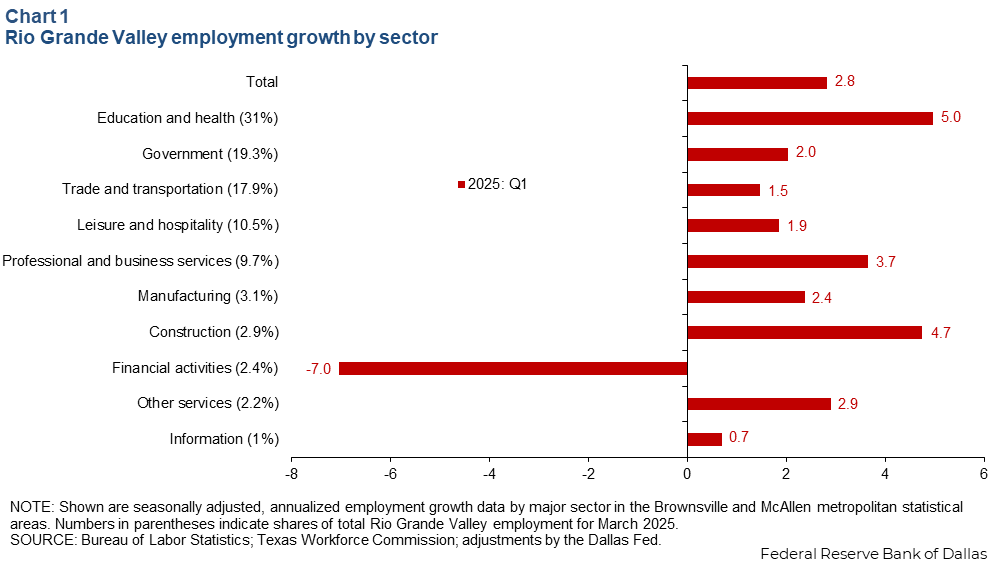
Unemployment falls
In December, the unemployment rate ticked down to 5.8 percent in McAllen and 5.2 percent in Brownsville (Chart 2). Unemployment rates in both metro areas were higher than the jobless rates of 4.2 percent and 4.1 percent in Texas and the U.S., respectively, but the gap has narrowed since the pandemic.
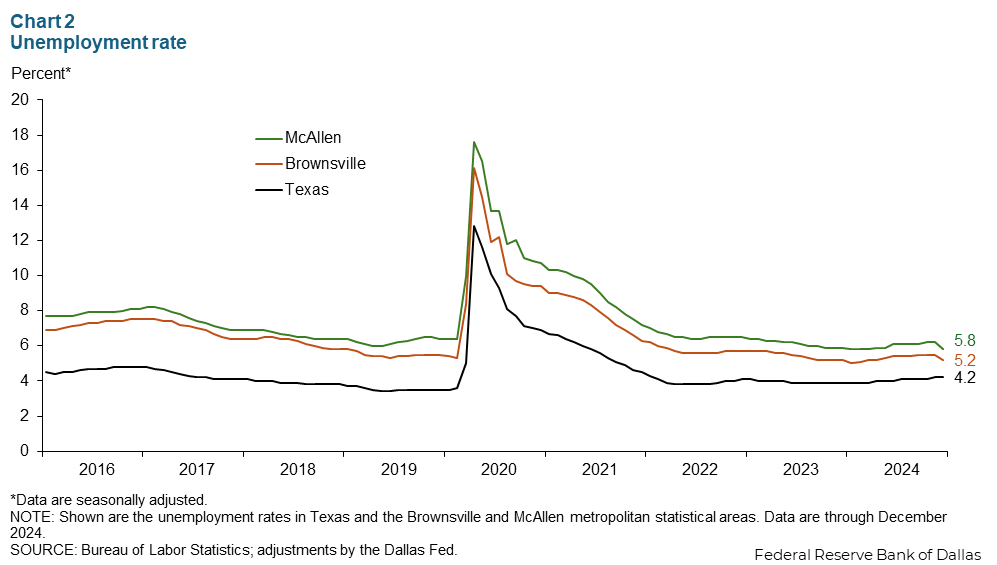
Wages increase sharply in Brownsville
Private sector hourly wages in Brownsville continued to rise steeply, up 18.8 percent year over year in December (Chart 3). Wage growth in McAllen slowed in 2024 but, at $21.97 per hour, wages were still up 2.6 percent year over year. Wages rose 6.0 percent in Texas.
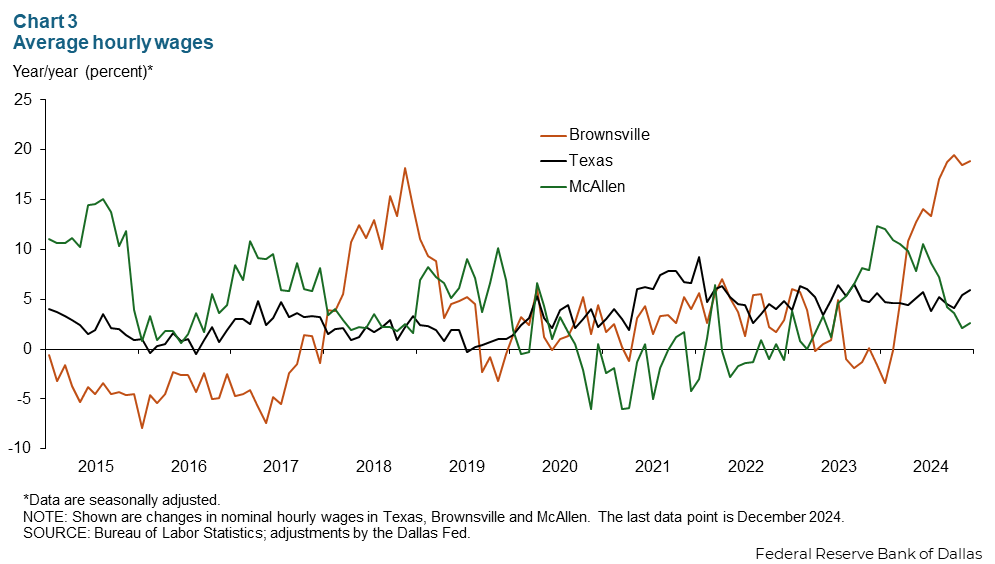
Water availability
Rio Grande farmers and households alike depend on river water. Water levels in Rio Grande Valley reservoirs held steady at 21.6 percent of storage capacity in early February but remained 17.4 percentage points below the historical average (Chart 4). Multiple factors have contributed to the low storage volume including drought, slower upstream flows into the Rio Grande’s top reservoir, and delays in Mexico’s treaty-established schedule for water deliveries to the U.S. from their Rio Grande tributaries.
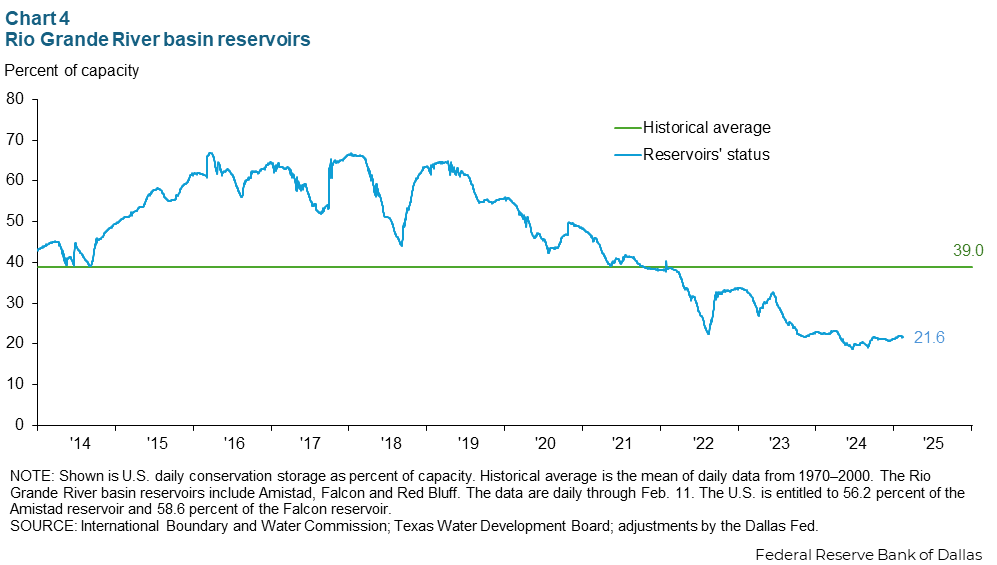
Trade
The three-month moving average of real exports through the Rio Grande Valley fell 6.1 percent year over year in December, while imports grew 5.1 percent (Chart 5). In Texas, the three-month moving average of exports fell 0.6 percent, and imports increased 3.5 percent. Trade through the Rio Grande Valley makes up 1.3 percent of overall U.S. trade. Top exports through this area are oil and machinery, while top imports are machinery and fruit.
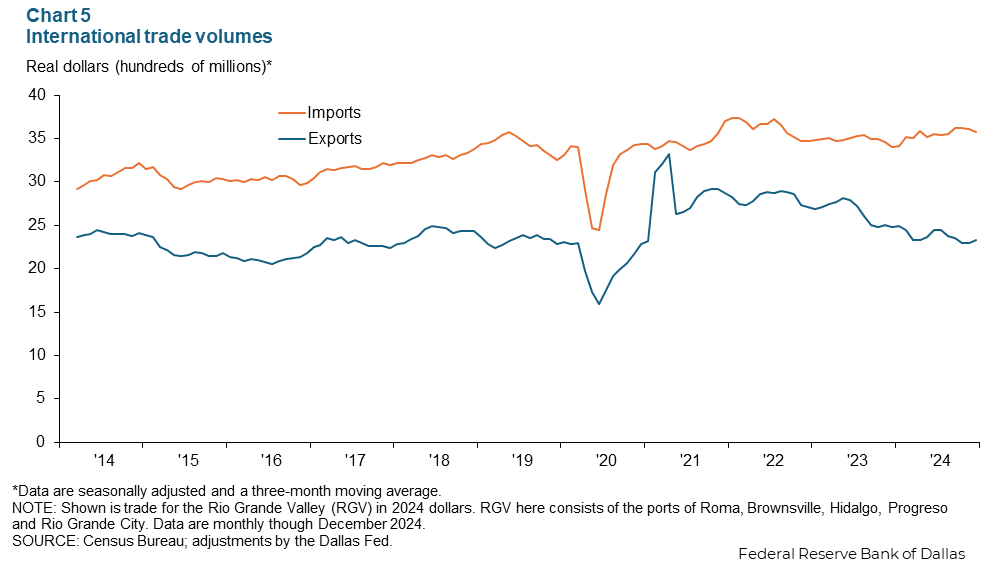
NOTES: Employment data are for the McAllen–Edinburg–Mission and Brownsville–Harlingen metropolitan statistical areas (Cameron and Hidalgo counties), unless otherwise specified. Data may not match previously published numbers due to revisions.
About Rio Grande Valley Economic Indicators
Questions or suggestions can be addressed to Ethan Dixon at Ethan.Dixon@dal.frb.org. Rio Grande Valley Indicators is published quarterly.